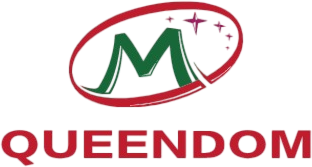Plant special fluorescent light, also known as grow light or horticultural light, is a specialized lighting technology designed to mimic the natural sunlight for the growth and development of plants. These lights are crucial for indoor gardening, vertical farming, and controlled-environment agriculture, where natural sunlight is not always available or sufficient. In this article, we will delve into the world of plant special fluorescent light, exploring its history, technology, applications, and the benefits it offers to both hobbyists and commercial farmers.
History of Plant Special Fluorescent Light
The concept of artificial lighting for plant growth dates back to the early 20th century when scientists began to experiment with different light sources to enhance plant growth. However, it was not until the mid-20th century that fluorescent lighting became popular for horticultural purposes. The development of the compact fluorescent lamp (CFL) in the 1970s revolutionized the industry, making it more accessible and energy-efficient.
Technology Behind Plant Special Fluorescent Light
Plant special fluorescent lights are designed to emit light in the visible spectrum, which is essential for photosynthesis. These lights typically consist of a fluorescent tube filled with mercury vapor, which emits ultraviolet (UV) light when an electric current is applied. The UV light then excites a phosphor coating inside the tube, which emits visible light in the blue, red, and green wavelengths.
The key to effective plant lighting is the balance of these wavelengths. Different plants require different ratios of blue, red, and green light for optimal growth. For instance, blue light promotes leaf growth and chlorophyll production, while red light encourages flowering and fruiting. Green light is less effective for photosynthesis but is still important for overall plant health.
Types of Plant Special Fluorescent Light
There are several types of plant special fluorescent lights available on the market, each with its unique characteristics and applications:
– Compact Fluorescent Lamps (CFLs): These are the most common type of fluorescent grow light and are widely used in small indoor gardens. They are energy-efficient, long-lasting, and come in various sizes and color spectrums.
– T5 Fluorescent Lamps: T5 lamps are a newer generation of fluorescent grow lights that are more energy-efficient and produce more light per watt than traditional CFLs. They are available in a variety of spectrums and are popular for use in hydroponic systems and grow tents.
– High-Pressure Sodium (HPS) Lamps: HPS lamps emit a lot of red and orange light, which is ideal for flowering and fruiting. They are often used in commercial greenhouses and are less common in home gardening setups due to their high heat output.
– Metal Halide (MH) Lamps: MH lamps produce a broad spectrum of light that is beneficial for all stages of plant growth. They are more expensive and less energy-efficient than HPS lamps but are still used in some high-end grow operations.
Applications of Plant Special Fluorescent Light
Plant special fluorescent lights are used in a variety of applications, including:
– Indoor Gardening: Hobbyists and small-scale farmers use these lights to grow plants in homes, basements, and garages where natural sunlight is limited.
– Vertical Farming: Vertical farming involves growing plants in vertically stacked layers, often in urban areas. Plant special fluorescent lights are essential for providing the necessary light for plant growth in such tightly packed environments.
– Controlled-Environment Agriculture: In greenhouses and other controlled environments, these lights can be used to supplement or replace natural sunlight, ensuring consistent growth and quality of produce.
– Medical and Research Applications: Plant special fluorescent lights are also used in medical research and for growing rare or delicate plants that require specific light conditions.
Benefits of Plant Special Fluorescent Light
The use of plant special fluorescent light offers several benefits:
– Energy Efficiency: Fluorescent lights are more energy-efficient than incandescent bulbs, making them a cost-effective choice for long-term use.
– Customization: Growers can choose lights with specific spectrums to meet the needs of different plants and growth stages.
– Space Efficiency: Fluorescent lights are compact and can be hung close to plants, reducing the need for large spaces.
– Health Benefits: Fluorescent lighting does not produce heat, which can be beneficial for sensitive plants and in environments where heat control is important.
– Environmental Impact: By reducing the need for large-scale transportation of produce, the use of plant special fluorescent light can help reduce the carbon footprint associated with food production.
In conclusion, plant special fluorescent light plays a vital role in modern horticulture, providing a reliable and efficient way to grow plants in environments where natural sunlight is not available. As technology continues to advance, we can expect to see even more innovative lighting solutions that further enhance plant growth and productivity.













Explore More from Queendom Lamp
Stay updated with the latest LED technology, lighting solutions, and industry insights.
Request a Quote About Queendom